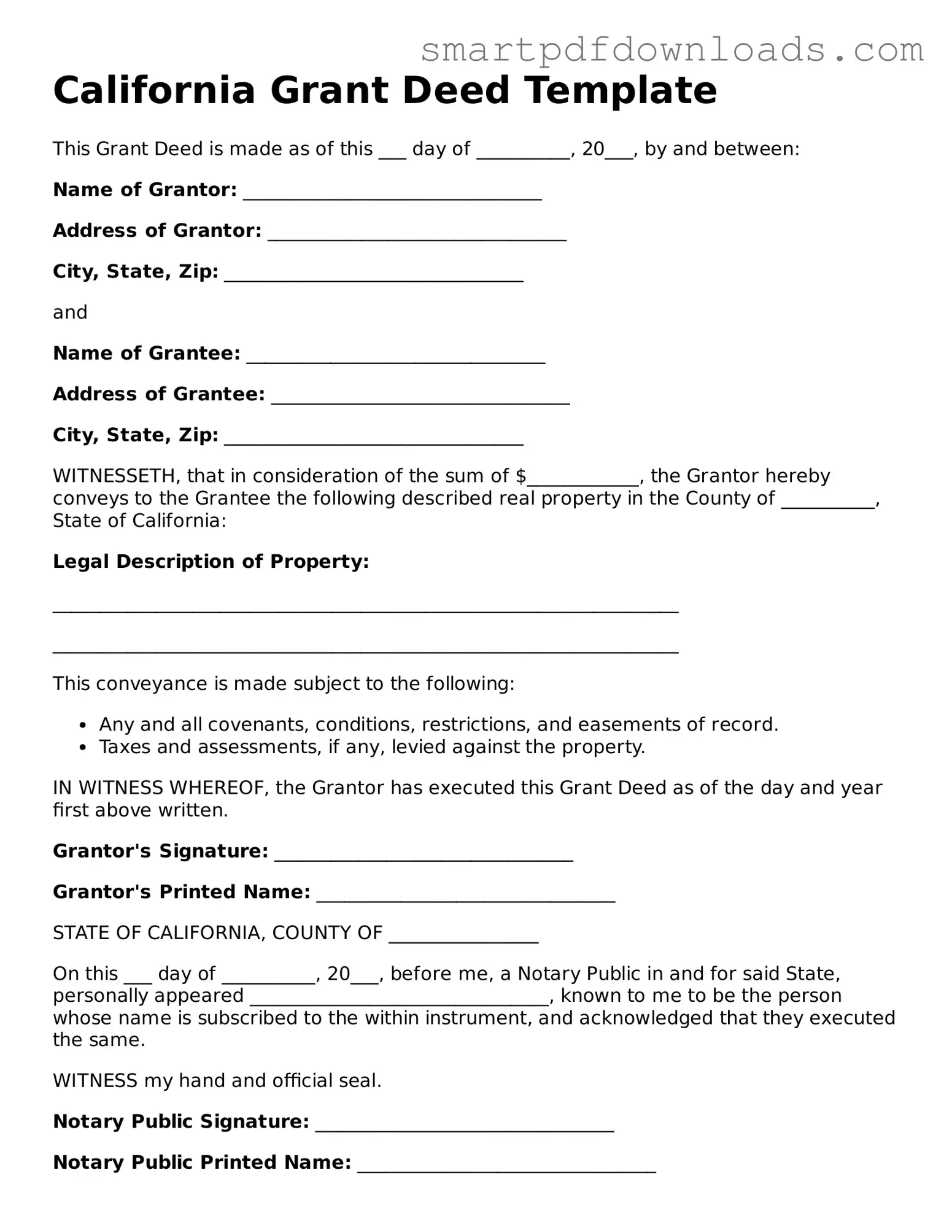California Grant Deed Template
This Grant Deed is made as of this ___ day of __________, 20___, by and between:
Name of Grantor: ________________________________
Address of Grantor: ________________________________
City, State, Zip: ________________________________
and
Name of Grantee: ________________________________
Address of Grantee: ________________________________
City, State, Zip: ________________________________
WITNESSETH, that in consideration of the sum of $____________, the Grantor hereby conveys to the Grantee the following described real property in the County of __________, State of California:
Legal Description of Property:
___________________________________________________________________
___________________________________________________________________
This conveyance is made subject to the following:
- Any and all covenants, conditions, restrictions, and easements of record.
- Taxes and assessments, if any, levied against the property.
IN WITNESS WHEREOF, the Grantor has executed this Grant Deed as of the day and year first above written.
Grantor's Signature: ________________________________
Grantor's Printed Name: ________________________________
STATE OF CALIFORNIA, COUNTY OF ________________
On this ___ day of __________, 20___, before me, a Notary Public in and for said State, personally appeared ________________________________, known to me to be the person whose name is subscribed to the within instrument, and acknowledged that they executed the same.
WITNESS my hand and official seal.
Notary Public Signature: ________________________________
Notary Public Printed Name: ________________________________
My Commission Expires: ________________________________
